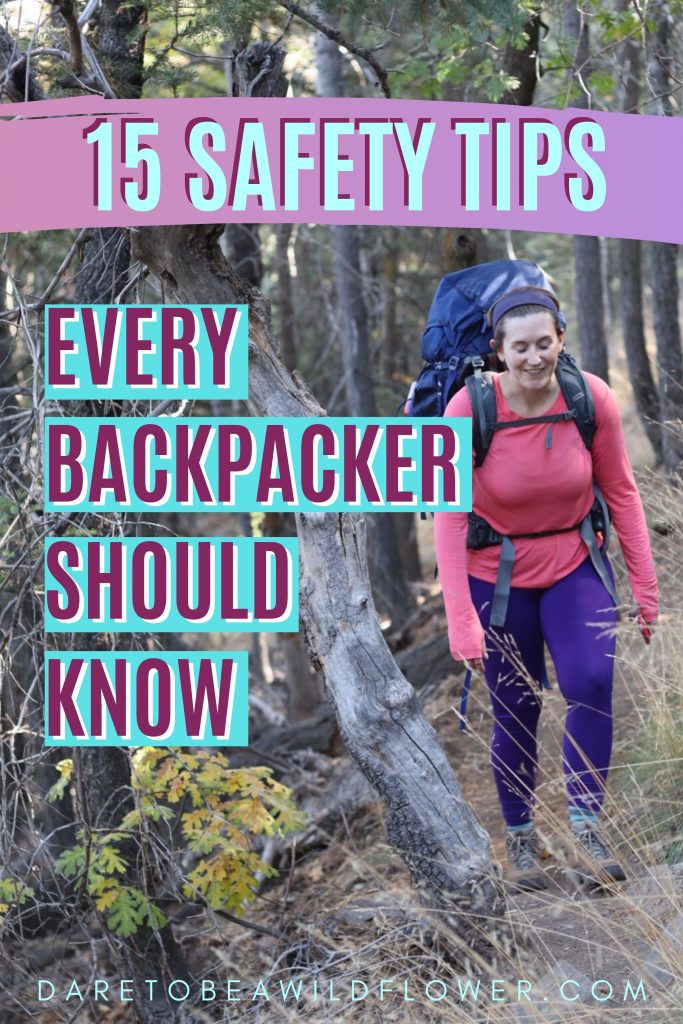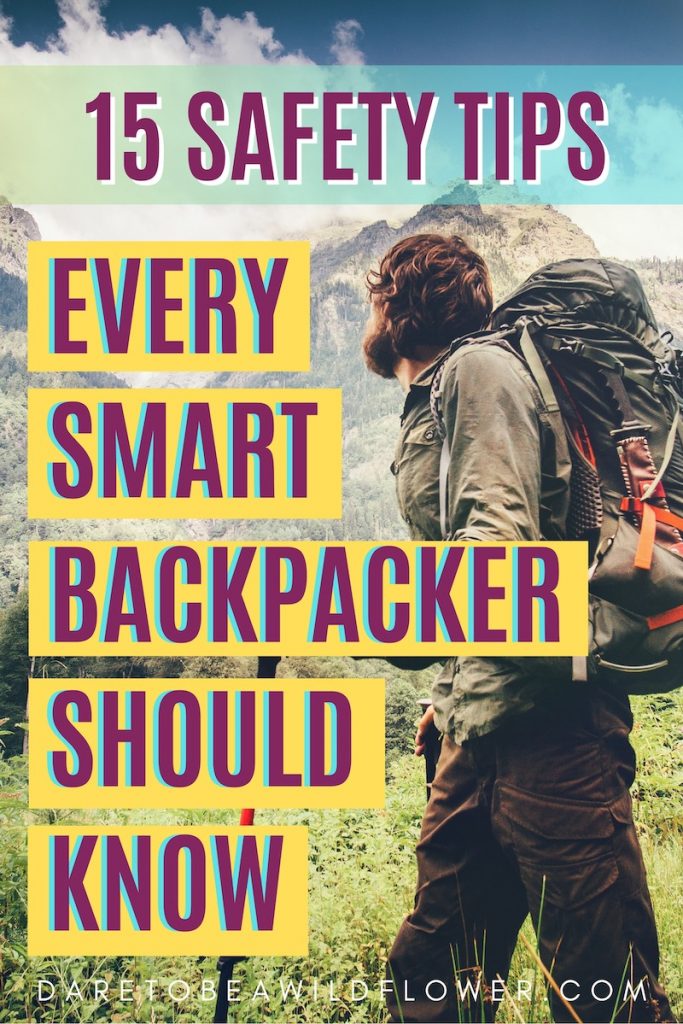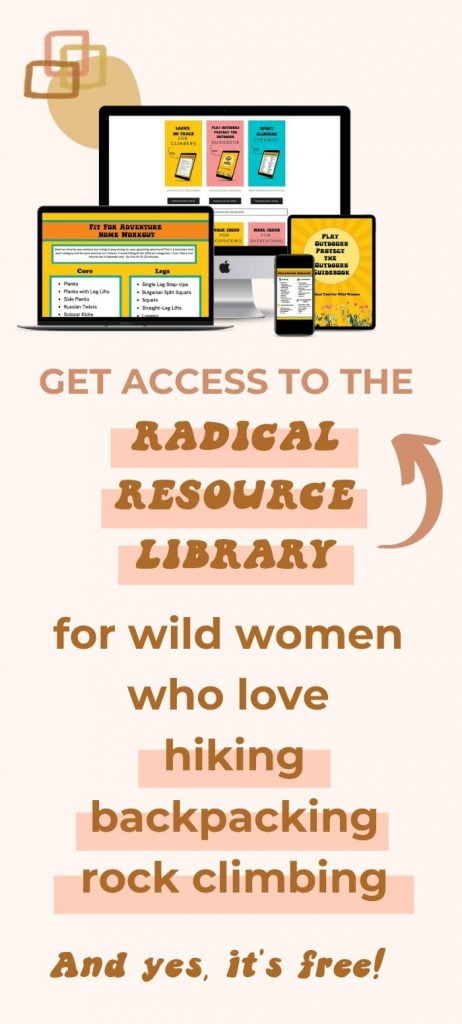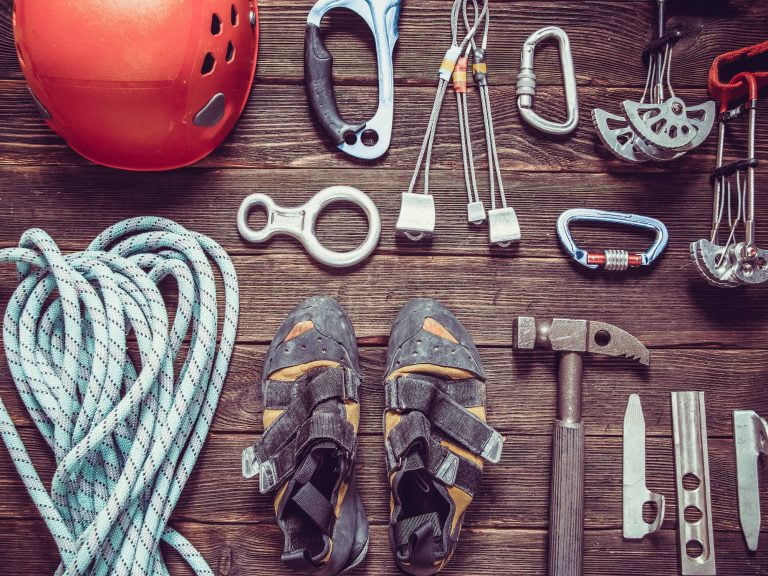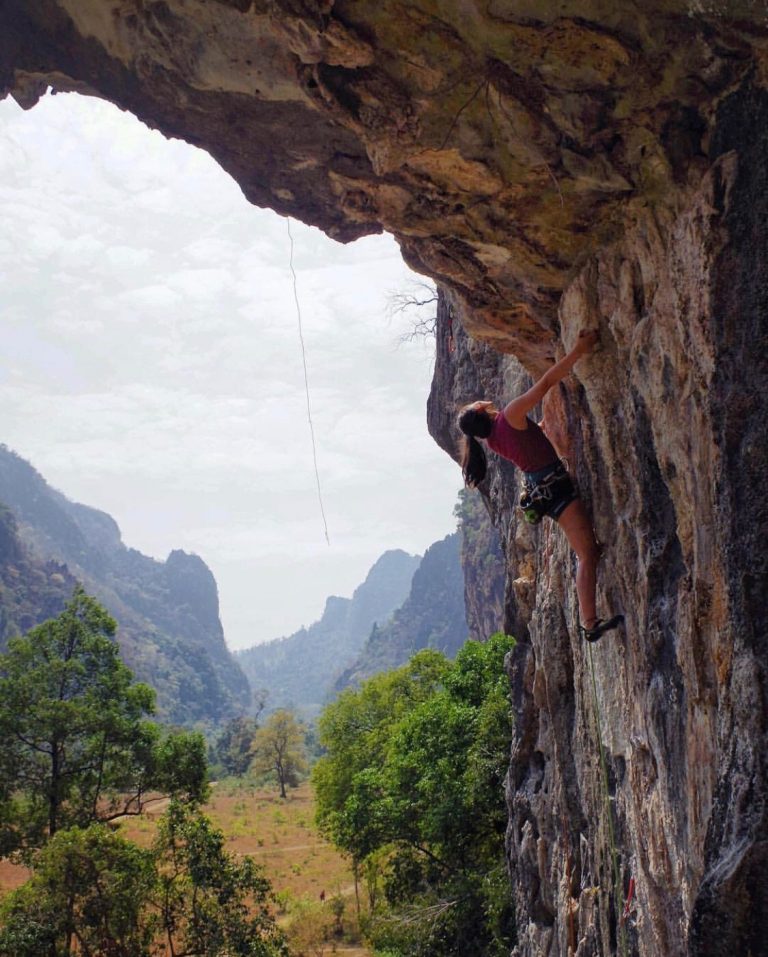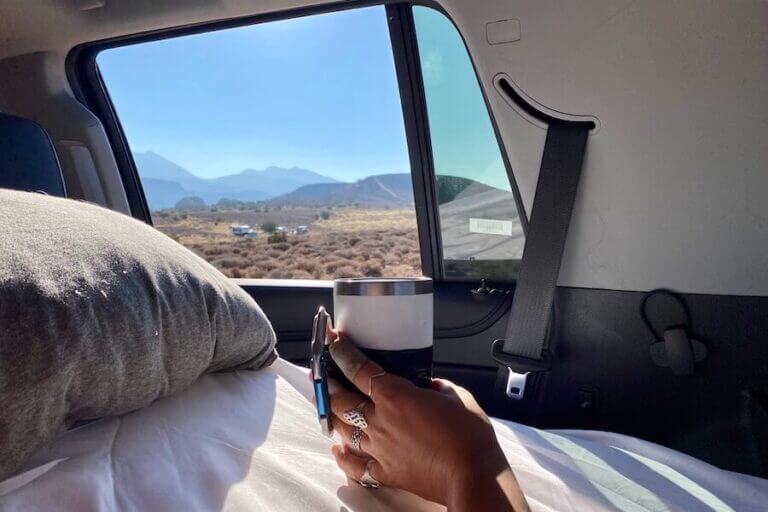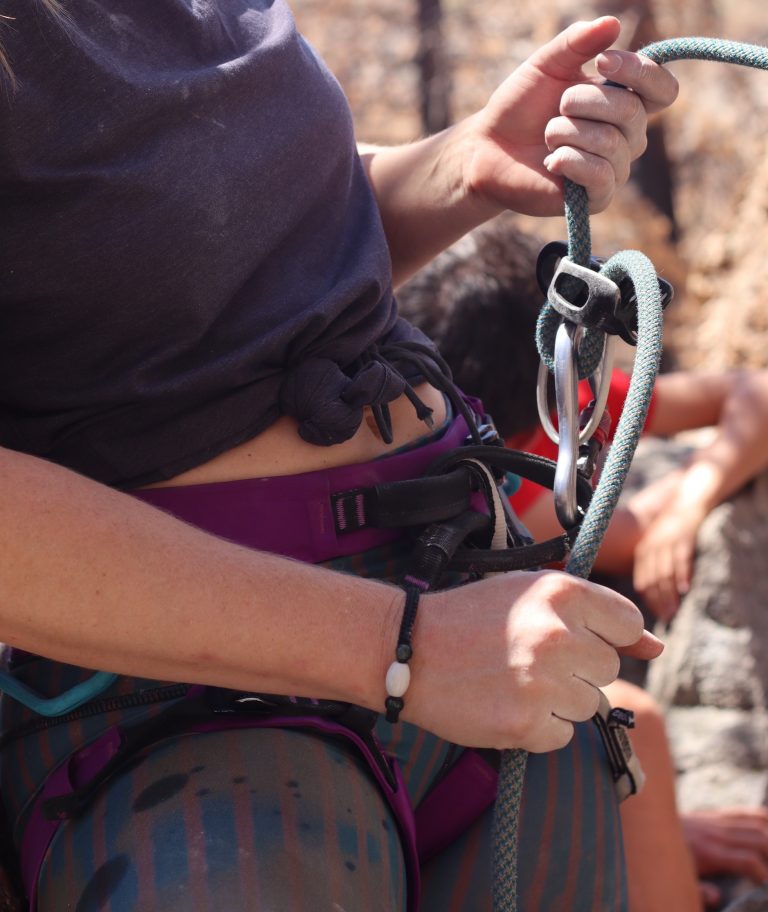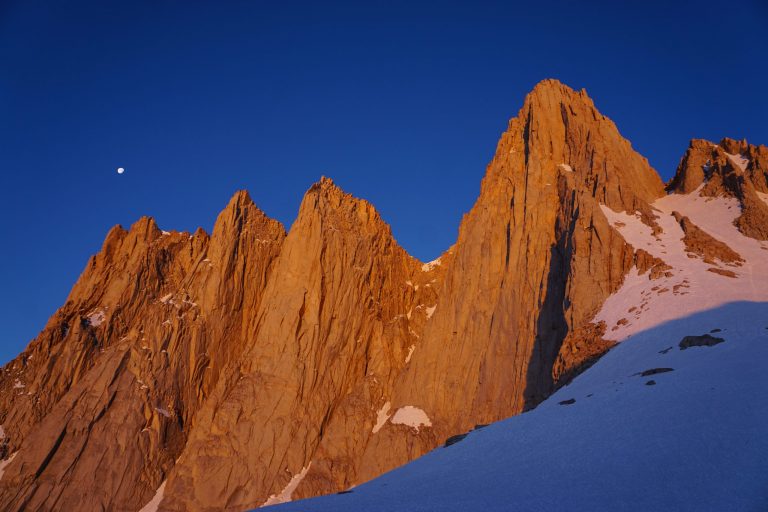15 Backpacking Safety Tips Every Smart Backpacker Should Know
Okay, so we’ve all heard of the 10 Hiking Essentials that we always bring along on any backcountry hike, right?
But what are some other backpacking safety tips for a safe and smooth adventure?
After all, backpacking in the wilderness is not just about survival, it’s about getting out there and having a great time!
Here are a few backpacking safety tips and as well as some essential hiking gear to help keep you safe, stoked, and exploring the wilderness like a backcountry expert.
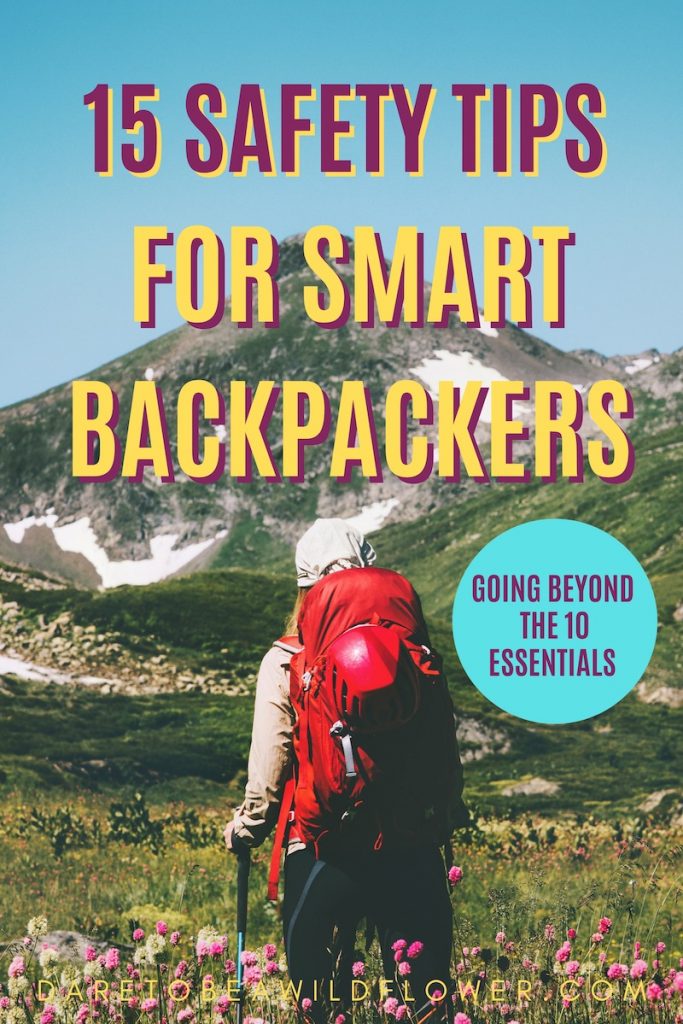
This post may contain some affiliate links for your convenience. This means if you make a purchase after clicking a link, I may earn a small commission but it won’t cost you a penny more! Isn’t that rad? Thanks for supporting the work I do at daretobeawildflower.com. Click here to read my full disclosure policy.
Tell someone where you are going and when you’ll be back.
Leave your itinerary with a trusted, responsible person at home. This itinerary should include:
- the date, time, and name of the trailhead in which your adventure starts.
- the approximate location/camp you’ll be camping at every night.
- the ETA on your return/ when they should expect a call from you.
- phone numbers of local Search and Rescue, National Park ranger station, etc.
- a detailed description of you, your tent, your car, and anyone you are backpacking with.
- when they should notify authorities that you are missing.
You’ll also want to leave your itinerary under the driver’s seat of your car.
Related: 22 Rookie Mistakes New Backpackers Make and How To Avoid Them
Call the ranger’s station.
One of the best backpacking safety tips I can give you is to ask call the ranger’s station and ask about:
- the current water situation
- “Is there water flowing in the creek near ______?”
- weather
- “When’s the last time it rained there?”
- fire regulations
- “Are open fires currently permitted?”
It takes a few minutes to make a phone call and it can have a huge impact on your trip.
Related: What are the Leave No Trace 7 Principles?
Be sure there’s no food in your car when in bear country.
If you’re parking your car somewhere where bears live, please be sure to remove all food and food wrappers from your car if you still want to have all your doors attached when you return.
Hungry bears have been known to rip car doors completely off to try to get to those delicious smelling snacks.
I mean, can you blame them? I’ve done worse when I’ve been hangry.
Unbuckle the sternum strap on your backpack when doing a river crossing.
Whether you are crossing over a log or wading through a rushing river with your backpack, be sure to undo the sternum strap (the strap that goes horizontally over your chest).
Falling into a deep river with a heavy pack stuck to your body, weighing you down could be tragic.
Unclip your sternum strap so you can ditch the gigantic, heavy pack if push comes to shove and you fall over into a deep river.
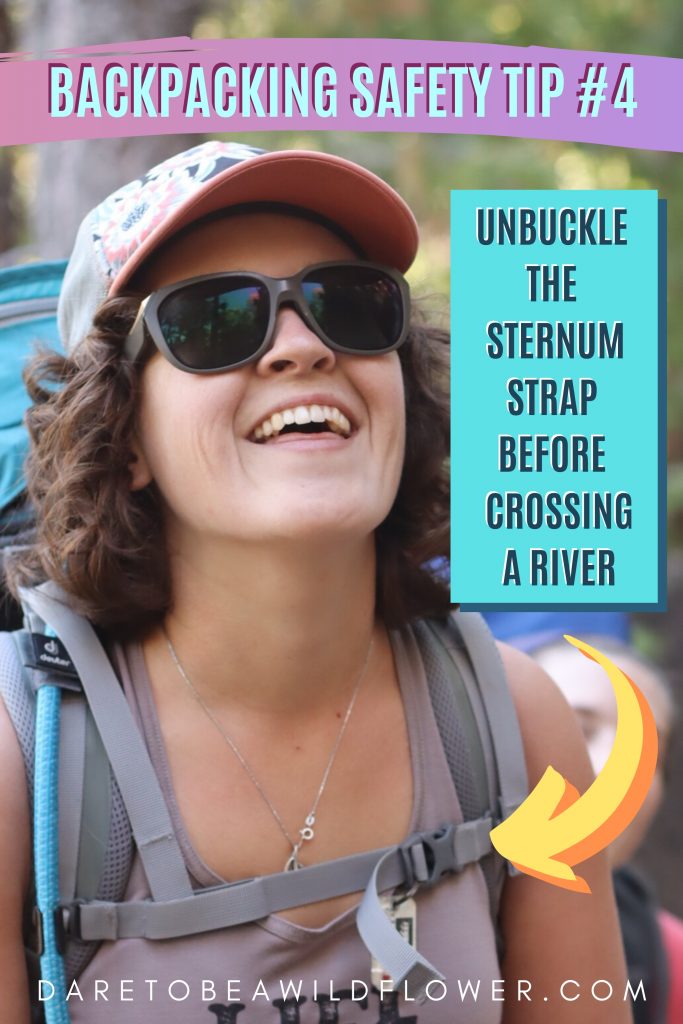
Treat your clothing with Permetherin.
Okay, so here’s the deal: you can put on all the bug repellent lotions and sprays on your exposed skin— but those little boogers will bite you straight through your clothing.
Keep malaria and other parasitic diseases away by treating all your clothing with permethrin before you go backpacking.

How to treat your clothing with Permetherin
- Hang your outfits on a clothes line.
- Spray the front and back.
- Wait for them to dry.
- Pack your clothes into your backpack.
I can usually get away with one bottle for my two outfits I wear while backpacking. If you want to treat more outfits, concerned that one bottle might not cover it, or just want to share the love, then I suggest grabbing at least two bottles of Permitherin.
Check the expiration dates on all your medications in your first aid kit.
We all know that a first aid kit is fundamental to the 10 Hiking Essentials. But what isn’t so obvious is the shelf life of your emergency kit medications.
You don’t want to get out there, have an incident where someone gets hurt or is having an allergic reaction, and bust out your first aid kit only to find all expired medications….oops!
Keep track of what month and year your medications expire and be sure to replace them when it’s time.
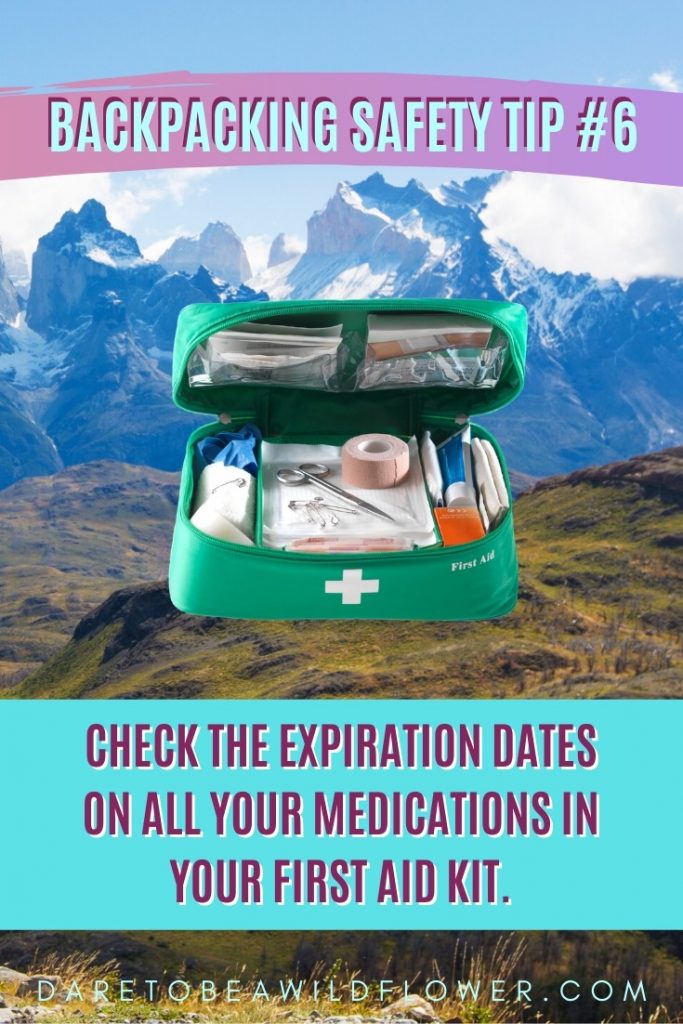
Be sure ALL smelly things are put into your bear canister or bear hang- and I mean everything!
- This includes:
- Empty food wrappers
- Chapstick
- Sunscreen/ Lotions
- Toothpaste
- Hygiene wipes
Place your bear canister or bear hang at least 200 feet away from your camp. Ideally, this is not near the edge of a cliff. After all, it’s your precious snacks!
Pro Tip: Opt for odor-proof bags like these for your trash. These are 17,000x more odor-proof than your typical ziplock bag which can dramatically reduce your chance of getting close and personal with a bear.
A bear’s sense of smell is 2,100x better than that of a human’s and can smell food up to 20 miles away. Just remember that.
Bring some Tenacious Tape.

This stuff is a life saver! Well, it’s a gear saver which is essentially the same thing.
Throw a small roll in your first aid kit so you can have it handy in case you need to repair:
- an insulation jacket
- a rain jacket
- a ripped sleeping bag
- a popped sleeping pag
- a torn tent
- a broken heart
- the possibilities are endless
Pack some Moleskin.
Hopefully, you bought the perfect pair of hiking boots and your feet are super happy and stoked. But if they’re not- love them up with some Moleskin before a blister forms.
Once a blister forms, it’s extremely painful and simply a waiting game for it to heal.

Bring a back-up water filter or water purification.
This is a super important one. This has saved me more than once on multi-day trips in the backcountry where the water filer broke.
I love these water purification droplets from Aquamira because they don’t have that terrible, infamous iodine tablet taste and they are small, light, and convenient to pack.
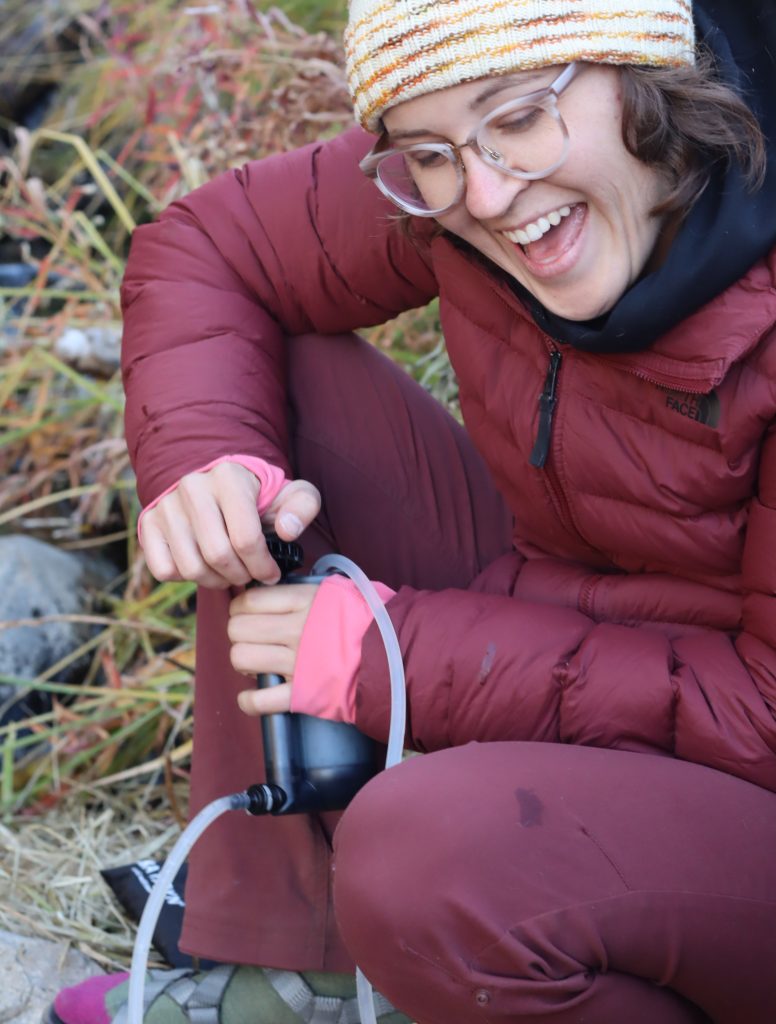
Always bring a backup system to purify or filter water in case Plan A falls through.
Speaking of which…
Drink enough water.
Generally speaking, you want to drink about 2 cups of water (roughly half a liter of water) every hour of hiking.
Now of course, factors like weather, elevation gain, humidity, personal hydration habits, and other variables will affect this number but it’s a good place to start.
If you’re sweating a lot, don’t be afraid to pop some electrolytes in there!

Watch for signs of altitude sickness.
Oxygen “gets thinner” at higher altitudes. Add in some strenuous, uphill hiking and maybe even some heat— and you have yourself a recipe for altitude sickness.
Signs of altitude sickness
- Dizziness
- Headaches
- Nausea
- Fatigue
- Loss of appetite
- Shortness of breath
- Rapid pulse
Reducing risks for altitude sickness
To keep the potential for altitude sickness down, you can :
- drink plenty of water.
- slow down your hiking pace.
- get plenty of sleep.
- carry altitude sickness supplements with you.
Carry an emergency device.
In a true emergency situation, one of these devices could be your only chance for survival.
Can’t I just call 911?
Well, this would be a viable option if you have signal.
As an avid backpacker, I can tell you most places in the wilderness simply aren’t covered.
So carrying an emergency device could be a literal life saver.
It’s a small price to pay for your safety.
Now an emergency device could be either a personal locator beacon or a satellite device.
Personal Locator Beacon (PLB)

- Allows Search & Rescue to locate you in emergency situations
- Has one function: SOS button AKA “We’re in trouble— send help!” button
- Works in remote locations worldwide
- Battery typically lasts 5 years
- No subscription required
- Strongest signal
- Be sure to register it here (free)
Satellite Device


- Require a subscription plan (fees vary depending on brand)
- Global coverage (coverage varies depending on brand)
- Need open, unobstructed sky area to send signal
- Some allow for two-way communication (texting) with SOS personnel
- Some allow for pre-loaded, non-emergency texts or emails to be sent to loved ones back home.
- Example: “Hey everyone, just wanted to check in and let you know that I’m doing just fine and having a great time on my trip!”
- Some allow for you to cancel SOS call
- Some offer GPS functions
- Rechargable batteries
Know how to navigate.
- Take a backcountry navigation class. This is the best gift you could give yourself.
- Take a GPS device with your relevant maps downloaded. Don’t forget to bring extra batteries!
- Carry your map in a waterproof bag.
- Download the Gaia app.
Always have extras…
There are a few things that you always want to bring extras of, including:
- pair of socks
- lighter
- set of batteries for your headlamp and GPS device
- food
Want more killer backpacking tips? Check these out!
- 22 Rookie Mistakes New Backpackers Make and How To Avoid Them
- What are the Leave No Trace 7 Principles?
- How To Save Money on Outdoor Gear
- The 10 Best Supplements for Long Distance Hikers
- How To Wash Your Down Sleeping Bag Without Ruining It
- 10 Things You Need to Know Before Buying Hiking Boots
I hope you found these tips helpful. If you have some backpacking safety tips to share, please drop them in the comments below! 🌻
Pin For Later: 15 Safety Tips Every Smart Backpacker Should Know
